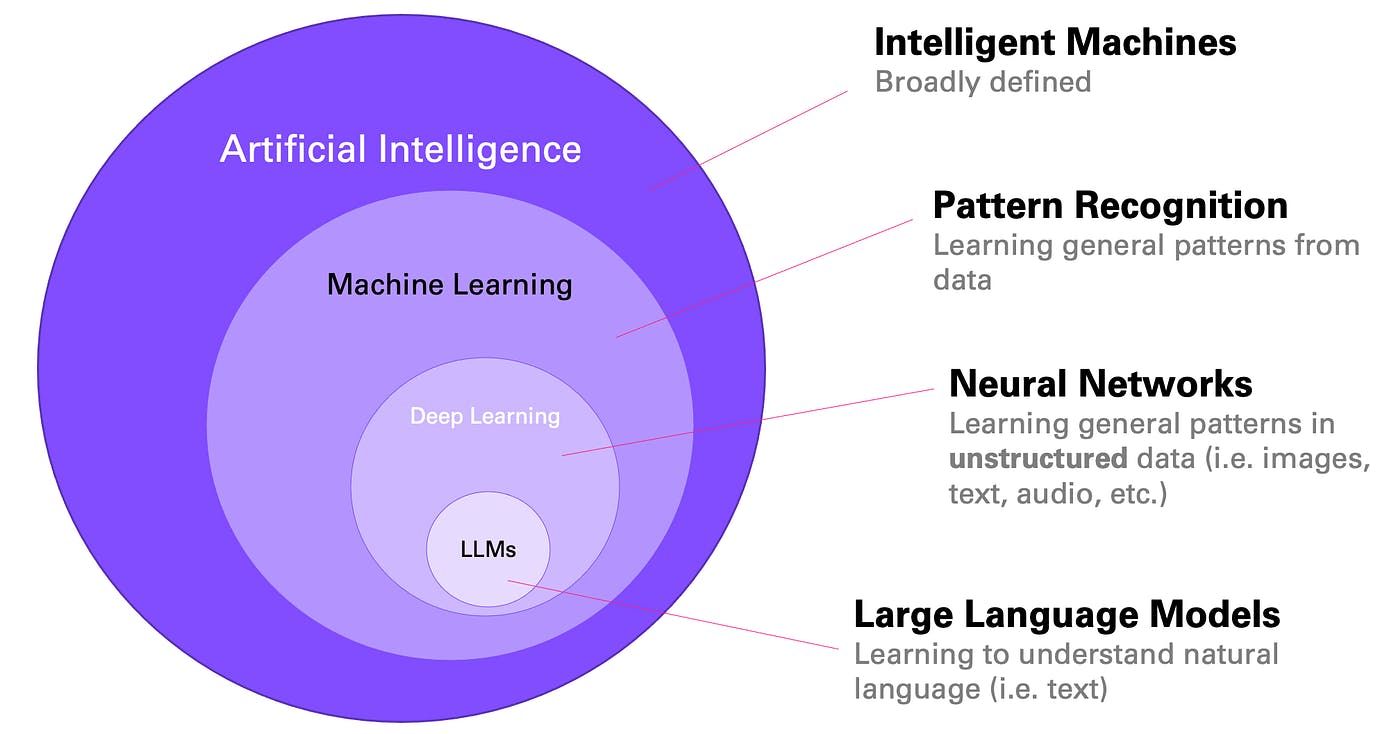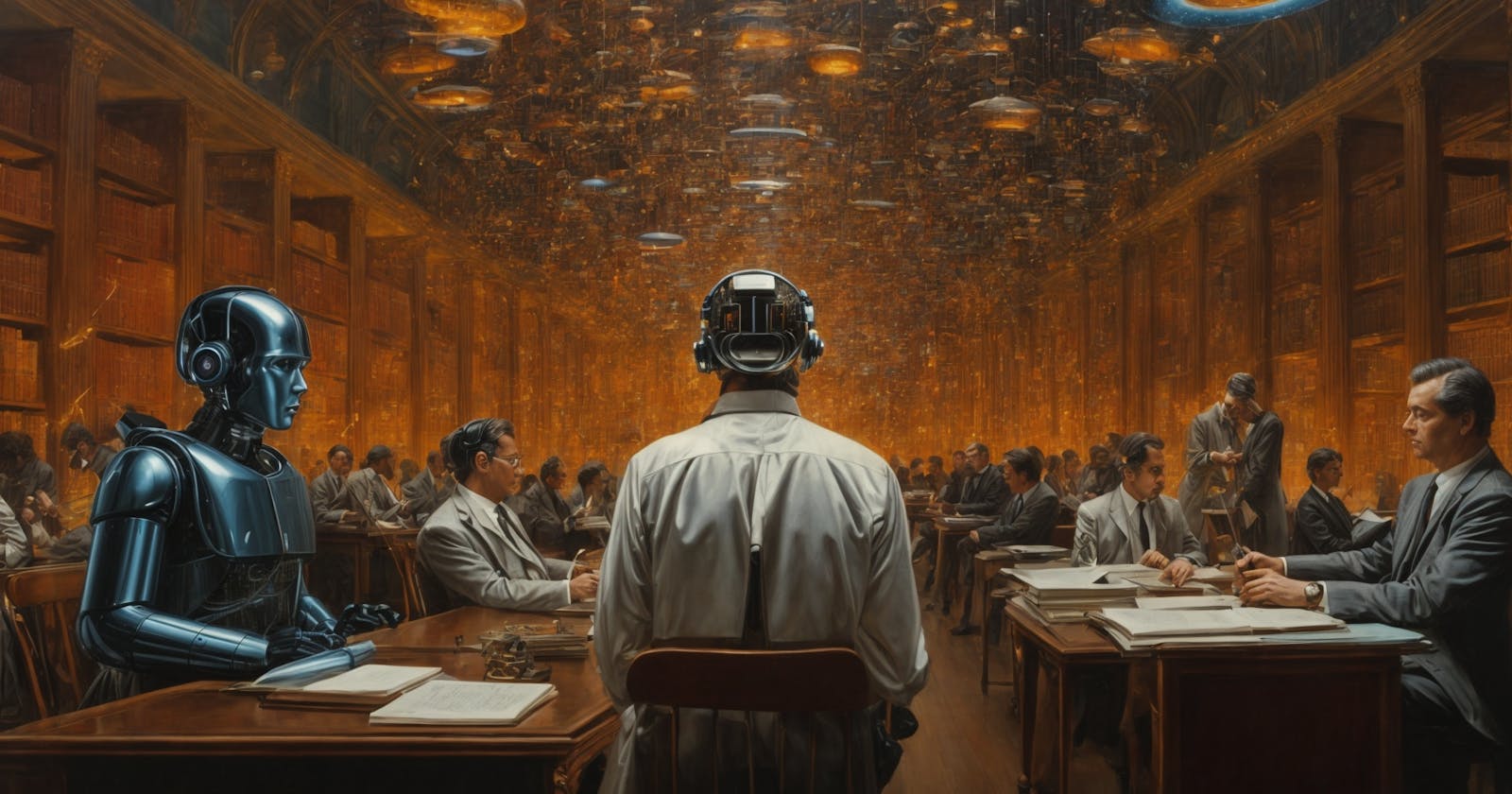The Dawn of AI: From Ancient Myths to Modern Realities
From Philosophy to AI: A Historical Overview
Table of contents
- The Journey Begins
- The Birth of AI as an Academic Discipline
- Key Figures and Milestones
- The Role of Neural Networks in AI
- The Power of Machine Learning
- Reinforcement Learning from Human Feedback (RLHF)
- Financial Backing from Microsoft
- The Emergence of Significant Models
- AI's Road to AGI: Current Models and the Path Ahead
- Key Takeaways
The Journey Begins
The journey of Artificial Intelligence (AI) began in antiquity, with tales of artificial beings endowed with intelligence or consciousness. This fascination led to philosophical discussions about the nature of intelligence and the possibility of creating machines that could mimic human thought processes. The seeds of modern AI were planted by philosophers aiming to describe human thinking through the mechanical manipulation of symbols. This philosophical exploration culminated in the invention of the programmable digital computer in the 1940s, inspiring the idea of creating an electronic brain.

Image Source: https://medium.com/data-science-at-microsoft/how-large-language-models-work-91c362f5b78f
The Birth of AI as an Academic Discipline
The formal field of AI research as we know it today began at a workshop held on the campus of Dartmouth College, USA during the summer of 1956. This event is considered the foundational moment for AI research, marking the birth of AI as an academic discipline. The term "Artificial Intelligence" was officially introduced by John McCarthy at this workshop, aiming to distinguish AI from other fields like cybernetics and the work of Norbert Wiener.
Key Figures and Milestones
Early Pioneers: John McCarthy, Marvin Minsky, and Nathaniel Rochester are often credited as the founding fathers of AI. Their work laid the groundwork for the field, with the Dartmouth Conference in 1956 establishing a research agenda for AI.
AI Winter of the 1980s: This period highlighted the challenges of achieving the ambitious goals set in the early days of AI research, including the difficulty of achieving "strong AI" or machines that could truly understand and replicate human intelligence.
Post-AI Winter and Current Landscape: The field saw a resurgence with the development of machine learning and deep learning techniques, leading to significant breakthroughs in AI, such as the ability for machines to learn from data, recognize patterns, and make decisions.
The Role of Neural Networks in AI
Neural networks, a fundamental component of machine learning and AI, simulate the cognitive processes of the human brain, allowing computers to learn and make decisions. They consist of artificial neurons connected by weights, which are adjusted through the learning process to minimize the error between predicted and desired outputs. There are various types of neural networks, including feedforward, recurrent, and convolutional neural networks (CNNs), each specialized for different tasks. Frameworks like TensorFlow and PyTorch facilitate the development and training of neural networks, supporting the creation of models for image recognition, natural language processing, anomaly detection, predictive maintenance, and drug discovery.
🎥 For my friends who prefer visual content (Optional)
The Power of Machine Learning
Machine learning (ML) is a subset of AI that focuses on algorithms and models that allow computers to learn from data and improve their performance. This evolution has led to the emergence of machine learning, a subset of AI that focuses on algorithms and models that allow computers to learn and make predictions or decisions without being explicitly programmed. The development of the first neural networks laid the foundation for the era of symbolic AI with rule-based systems. The late 1970s to the 1990s saw a period of slowdown and reevaluation known as the AI Winter due to the limitations of existing technologies. The late 1990s brought a resurgence of AI with the advent of the internet and the increase in data availability. This led to the rise of ML, as algorithms could now analyze large amounts of data and identify patterns and trends that humans may not be able to detect. The increase in computational power and the development of advanced algorithms like deep learning further propelled the evolution of AI and ML.
🎥 For my friends that are motivated to delve into ML (Optional)
Reinforcement Learning from Human Feedback (RLHF)
Reinforcement Learning from Human Feedback (RLHF) is a crucial technique in AI development, particularly for enhancing large language models like ChatGPT. It involves a two-step process: pretraining on a vast text corpus and fine-tuning using a reward model that incorporates human feedback. This feedback is crucial for adjusting the model's responses to match human preferences, thereby improving its performance across various tasks.
One of the main challenges of RLHF is the cost of collecting high-quality human annotations, which is necessary for training the reward model. Despite this, RLHF has shown potential in improving AI models, with successful applications in models like ChatGPT, demonstrating the capability to generate responses more aligned with human preferences.
The future of RLHF lies in addressing its limitations and exploring new design options to further its advancement. This includes enhancing the RL optimizer and developing new algorithms to improve the RLHF workflow. As the field evolves, RLHF is expected to play a significant role in advancing AI towards more sophisticated and human-like models.
🎥 For my friends who prefer their content in podcast form (Optional)
Financial Backing from Microsoft
Microsoft's financial backing has played a crucial role in the development and advancement of AI technologies. By investing in AI research and projects, Microsoft has supported the development of cutting-edge AI models and frameworks. This financial backing has not only provided the necessary resources for research and development but has also helped in the commercialization of AI technologies, making them accessible to a broader audience.
The Emergence of Significant Models
| Feature | ChatGPT | Gemini | LLaMA 2 | Grok |
| Developer | OpenAI | Google DeepMind | Meta | xAI |
| Model Name | GPT-3.5 | 1.0 Pro | LLaMA 2 | Grok |
| Focus | Text generation | Text and reasoning | Creative content generation and low-risk ventures | Conversational generative AI |
| Accessibility | Closed-source | Closed-source | Open-source | Closed-source |
| Transparency | OpenAI outlines responsible AI development and mitigation strategies | Limited, but Google AI publishes research papers and blog posts on similar models | High (Open-source model) | Limited |
| Ethical considerations | OpenAI outlines responsible AI development and mitigation strategies | Not explicitly mentioned | Emphasis on ethical AI | Focus on contributing scientific and economic value, development of safeguards against malicious use |
This table compares several large language models (LLMs) across various features. LLMs are AI models trained on massive amounts of text data to communicate and generate human-like text. Here, we see a focus on areas like text generation, reasoning, and creative content creation. While some models are open-source (like LLaMA 2), allowing for greater transparency, others remain closed-source (like ChatGPT). There's also a range of emphasis on ethical considerations, with some developers outlining responsible AI practices.
Remember, this is just a glimpse into the dynamic world of LLMs. New models with diverse capabilities are constantly emerging
AI's Road to AGI: Current Models and the Path Ahead
The future of AI is marked by the pursuit of Artificial General Intelligence (AGI), a state where machines surpass human intelligence across a broad spectrum of tasks. Current models like ChatGPT and Gemini are progressing from narrow, rule-based systems to more complex, task-performing systems. However, they remain confined to their programming and training data, unable to learn beyond initial instructions.
The quest for AGI necessitates a reevaluation of intelligence and its measurement, emphasizing a broad range of cognitive abilities. Platforms like Ollama.com support open-source AI development, promoting ethical practices and transparency. As we move towards AGI, the importance of responsible development, ethical considerations, and societal involvement grows. The open-source approach underscores the need for a collaborative, ethically grounded approach to AI development.
🎥 For my friends that are motivated to delve into AGI (Optional)
Key Takeaways
The journey of Artificial Intelligence (AI) began in antiquity with philosophical discussions about creating machines that could mimic human thought processes. This led to the invention of the programmable digital computer in the 1940s, marking the start of modern AI.
The formal field of AI research as we know it today began at a workshop held at Dartmouth College in 1956, with John McCarthy introducing the term "Artificial Intelligence" to distinguish AI from other fields.
Key figures in the early development of AI include John McCarthy, Marvin Minsky, and Nathaniel Rochester, who laid the groundwork for the field. The AI Winter of the 1980s highlighted the challenges of achieving "strong AI."
The field has seen a resurgence with the development of machine learning and deep learning techniques, leading to significant breakthroughs in AI. Neural networks, a fundamental component of these technologies, simulate human brain processes, allowing computers to learn and make decisions.
Microsoft's financial backing has played a crucial role in the development and advancement of AI technologies, supporting the development of cutting-edge AI models and frameworks.
Reinforcement Learning from Human Feedback (RLHF) is a technique that significantly contributes to the advancement of AI, particularly in the development of large language models like ChatGPT. RLHF involves a multi-step training process that integrates human feedback to fine-tune AI models, enhancing their performance in various tasks.
The future of AI is intricately tied to the path towards achieving Artificial General Intelligence (AGI), which represents a state where machines possess the ability to understand, learn, and apply knowledge across a wide range of tasks at a level indistinguishable from human intelligence. Current AI models, including ChatGPT, Llama 2, and Gemini, are significant steps towards AGI but still operate within the bounds of their programming and training data.
The journey towards AGI involves not only technological advancements but also a shift in how we define and measure intelligence. Platforms like Ollama.com play a vital role in encouraging collaboration, transparency, and ethical practices in AI research and development.
🎶 MUSIC BIT: As we wrap up our exploration of the journey of Artificial Intelligence (AI) from ancient philosophies to the quest for Artificial General Intelligence (AGI), let's take a moment to appreciate the symphony of AI's evolution through a musical lens. "Binary Dreams: How A.I. Sees the Universe" offers a unique perspective, weaving together the threads of AI's development with the rhythm of discovery and innovation. This piece not only celebrates the milestones and breakthroughs in AI but also reflects on the essence of exploration and the pursuit of understanding.
In the spirit of the music video, we recognize the harmony between the human quest for knowledge and the AI's ability to learn, adapt, and evolve. Just as a symphony requires a symphony of instruments to create a full-bodied sound, AI's advancement is the result of a collective effort, from the founding fathers of AI to the pioneers of neural networks and machine learning.
The song "Binary Dreams" is a testament to the enduring human spirit of curiosity and creativity, a spirit that continues to drive the AI revolution. As we look forward to the future of AI, let's embrace the music of discovery and the promise of AGI. Until our next article in two weeks, may the melody of AI's journey continue to resonate with us, inspiring new possibilities and new ways to explore the universe of human intelligence. Goodbye until then! 👋🏻

